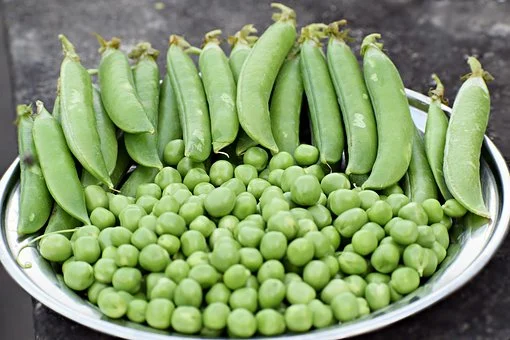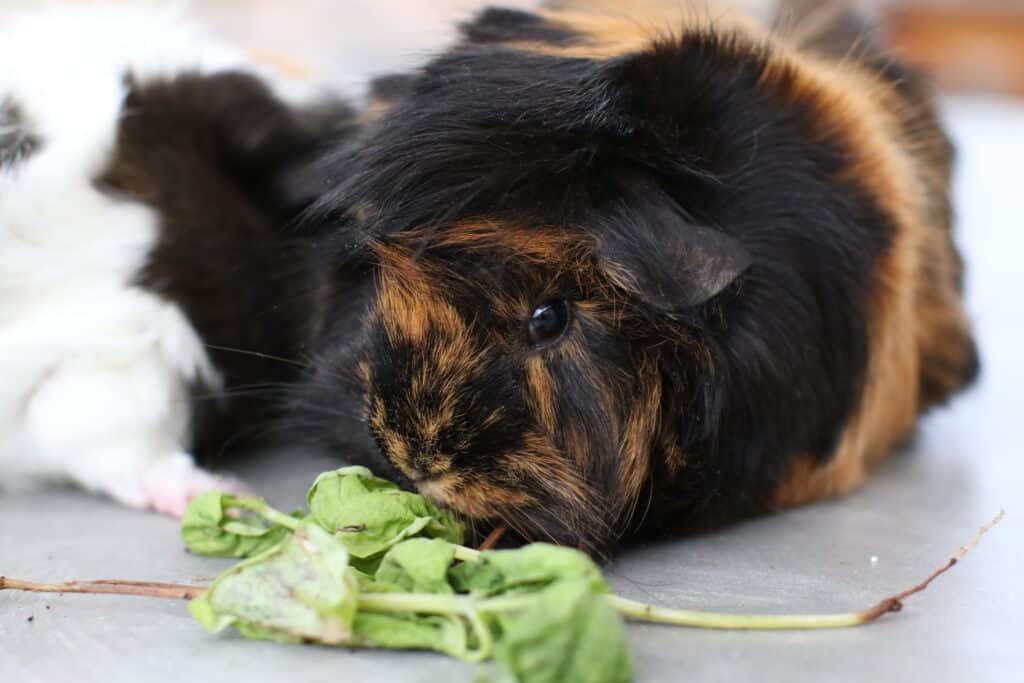As an Amazon Associate we earn from qualifying purchases.
Green beans are a type of vegetable that is enjoyed by many people. Other animals can eat it too, which leads us to the question, can guinea pigs eat green beans?
Can A Guinea Pig Eat Green Beans?
Guinea pigs can eat green beans without any problems. Green beans can be a healthy and nutritious treat for your pet. However, you should always give your furry pet green beans in moderation. Too many green beans can cause digestive problems.

When feeding your pet green beans, make sure to wash them thoroughly first. You can also steam the green beans to make them softer and easier for your guinea pig to eat.
Preparing Green Beans
Green beans are a good source of fiber, vitamin C, and K, and contain a decent amount of protein. They can be fed to guinea pigs either cooked or raw. When feeding green beans to your guinea pig, make sure to wash them thoroughly and cut them into small pieces to prevent choking. You can give your guinea pig a few green beans as a treat several times a week. Just make sure not to overdo it!
Benefits Of Green Beans
Green beans offer a host of benefits for guinea pigs:
- They are a good source of fiber, which can help with digestion.
- They are also high in vitamin C, which is essential for a guinea pig’s health. Vitamin C helps boost the immune system, helps with the absorption of iron, and aids in the production of collagen.
- Green beans are also a good source of vitamin K, which is important for blood clotting.
Possible Side Effects Of Green Beans
As with anything, too much of a good thing can be bad for you. The same goes for green beans. If your guinea pig eats too many green beans, it may experience diarrhea or other digestive problems:
- Green beans may cause your pet to experience gastrointestinal distress, including gas, bloating, and diarrhea.
- Some guinea pigs may be allergic to green beans and experience severe reactions, such as difficulty breathing or swelling of the face, lips, and tongue.
- Feeding green beans regularly can result in nutritional deficiencies since they are not a complete source of nutrients.
- Overfeeding green beans can lead to obesity and other health problems.

Frozen Or Cooked Green Beans?
There are a few things to consider when deciding whether to give your guinea pig cooked or frozen green beans:
- First, green beans are a good source of vitamins A and C and fiber. However, they also contain sugar and should be given in moderation. Too many green beans can cause gas and diarrhea.
- Frozen green beans are a convenient option and can be thawed as needed. They retain their nutrients better than cooked green beans, so they are a good choice if you want to give your guinea pig the most nutrition possible. Just be sure to watch portion sizes, as too many green beans can still cause digestive issues.
- Cooked green beans may be easier for some guinea pigs to eat, as they are softer than frozen green beans. If your pet has trouble chewing or digesting raw vegetables, cooked green beans may be a better option. However, they do not retain as many nutrients as frozen green beans.
Ultimately, the best choice for your pet guinea pig is whichever type of green bean they will eat most willingly. If they seem to enjoy both equally, mix it up and offer both cooked and frozen green beans to give them variety in their diet.
Guinea Pig Diet
Guinea pigs are small, social rodents from South America. They make popular pets because they’re docile, lovable, and relatively easy to care for. A healthy diet is essential to keeping your pet happy and healthy.
While a lot of people think that they can eat any kind of vegetable, the truth is that some vegetables are harmful to them. For example, vegetables like cabbage, broccoli, and kale can cause digestive problems for guinea pigs. It’s important to do your research and to only feed them vegetables that are safe for them to eat.
One of the most important things to remember when it comes to feeding your pet is that they need a lot of hay. Hay is an important part of their diet because it helps them stay healthy and provides them with the fiber they need. Make sure to give them plenty of hay to munch on every day.
In addition to hay, you’ll also want to offer your guinea pig fresh vegetables and fruits. Some good options include carrots, apples, grapes, and bananas. Just like with hay, it’s important to make sure that the vegetables and fruits you’re feeding your pet are safe for them to eat.

If you’re looking for a way to add some variety to your guinea pig’s diet, one option is to offer them pellets that are specially made for guinea pigs. These pellets should make up the majority of their diet and can be found at most pet stores.
Another option is to give your guinea pig treats that are specifically made for them. These treats can be found at most pet stores as well and will help add some variety to their diet.
By following these tips, you can help ensure that your pet has a healthy and balanced diet. This will help them stay happy and healthy for many years to come.
Keeping Your Furry Pet Healthy
Guinea pigs are wonderful, social creatures that make great pets. However, they require special care to stay healthy and thrive. Here are five tips to help you keep your furry friend healthy:
- Provide a nutritious diet. Their diet should consist of hay, fresh vegetables, and a small number of pellets. Avoid feeding them sugary foods or processed foods as these can cause health problems.
- Give them plenty of exercise. They need to exercise to stay healthy and avoid obesity. Provide them with plenty of space to run and play. You can also give them toys to play with to help keep them active.
- Keep their cage clean. A dirty cage can cause health problems for your pet. Clean the cage regularly and make sure to remove any soiled bedding or food.
- Provide fresh water. Fresh, clean water is essential for your guinea pig’s health. Make sure to change their water daily and clean their water bottle regularly.
- Take them to the vet. It’s important to take them to the vet for regular checkups and vaccinations. This will help ensure they stay healthy and catch any problems early on.
Conclusion
Green beans can be a healthy and nutritious treat for your guinea pig. However, you should always give them in moderation. Too many green beans can cause digestive problems. When feeding green beans to your guinea pig, make sure to wash them thoroughly and cut them into small pieces to prevent choking. Monitor your pet when feeding them fresh green beans and make sure they don’t eat too many.